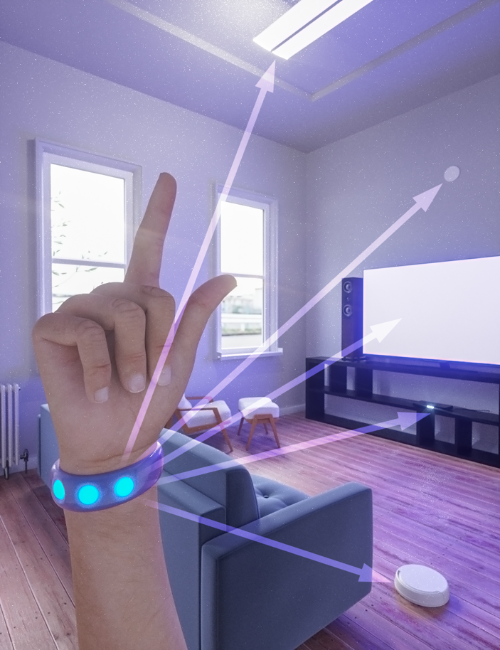Wearable Self-powered Piezoelectric Wristband
Supervisors: Dr Hadi Heidari and Professor Sandy Cochran
Thanks to the fast development of electronic and computer technologies, more and more research into human-computer interaction has emerged. Traditional input methods no longer satisfy people’s requirements, such as mouse and keyboard [1]. Wearable, intelligent, and self-powered devices are user-centered and more suitable for users’ habits, which could improve the user experience and are much more convenient for controlling appliances. Gestures play an important role in body language and are the intuitive way for humans and objects to interact (Figure 1). The physical movement of the human body conveys rich information and meaning in communication, and it participates in the language generation process.

Figure 1. The conceptual schematic of self-powered wrist-worn gesture sensing.
We aim to recognize human body gestures with high accuracy and reproducibility. To achieve these requirements, different piezoelectric sensors are combined to collect movement signals and simultaneously harvest energy from the mechanical movements. For example, piezoelectric sensors can be used to detect the pressure signal extruded by the shape changes of skeletal muscles and dynamic movement. The different types of signal are processed by machine learning to classify and reconstruct hand gestures on the computer. A user interface might be designed to display the recognized result which makes it easier for those inexpert to operate and understand the procedure. In this project, the PhD candidate will fabricate piezoelectric sensors and will test and characterise the electromechanical and physical properties using impedance spectroscopy, piezoelectric and surface roughness analysis. The piezoelectric devices will be embedded into a flexible polymer (e.g. PDMS) with power management circuitry required for a reliable approach for measuring small movement.
Reference
[1] Liang, X., Ghannam, R. and Heidari, H. (2019) Wrist-worn gesture sensing with wearable intelligence. IEEE Sensors Journal, 19(3), pp. 1082-1090. (doi:10.1109/JSEN.2018.2880194)

